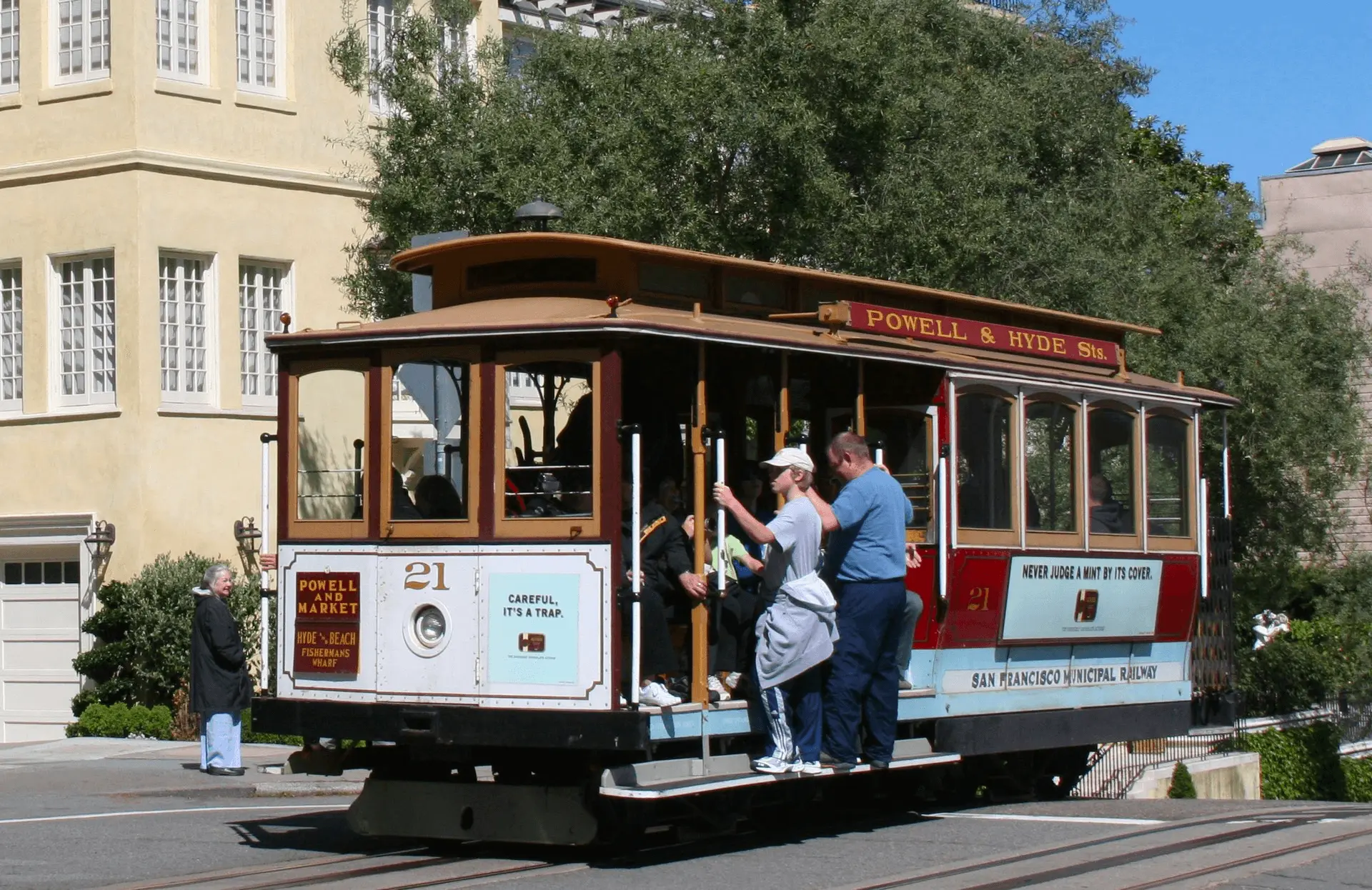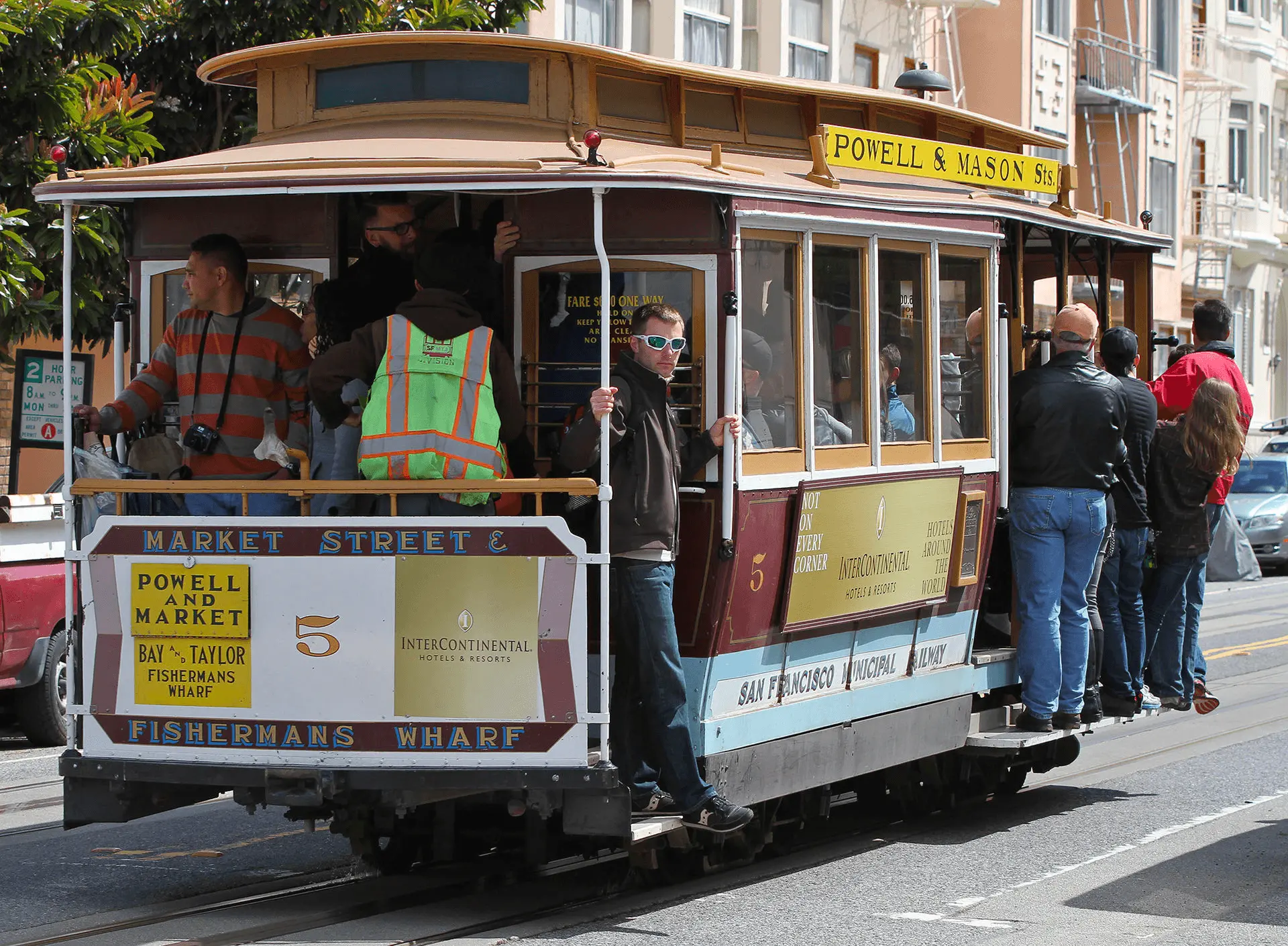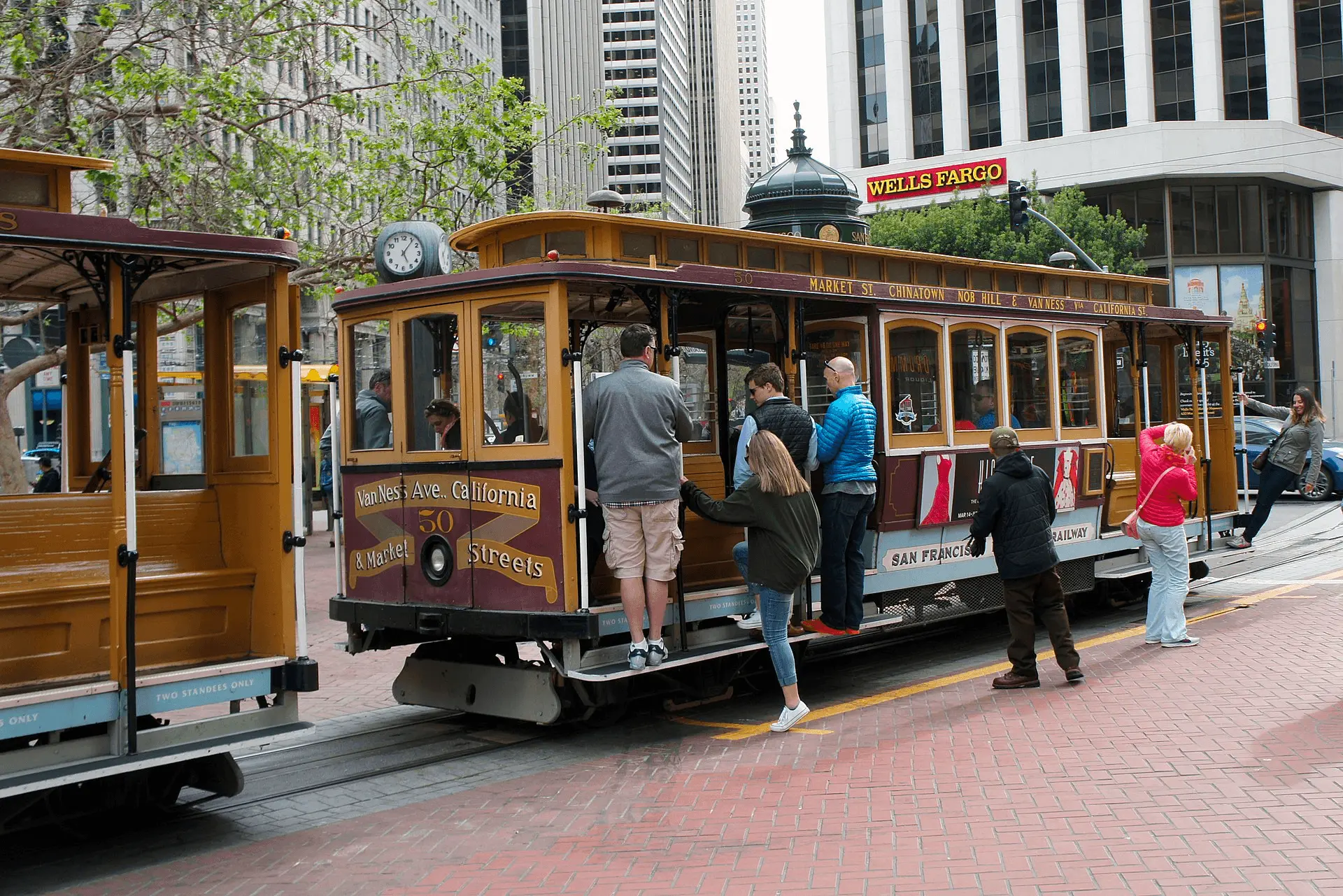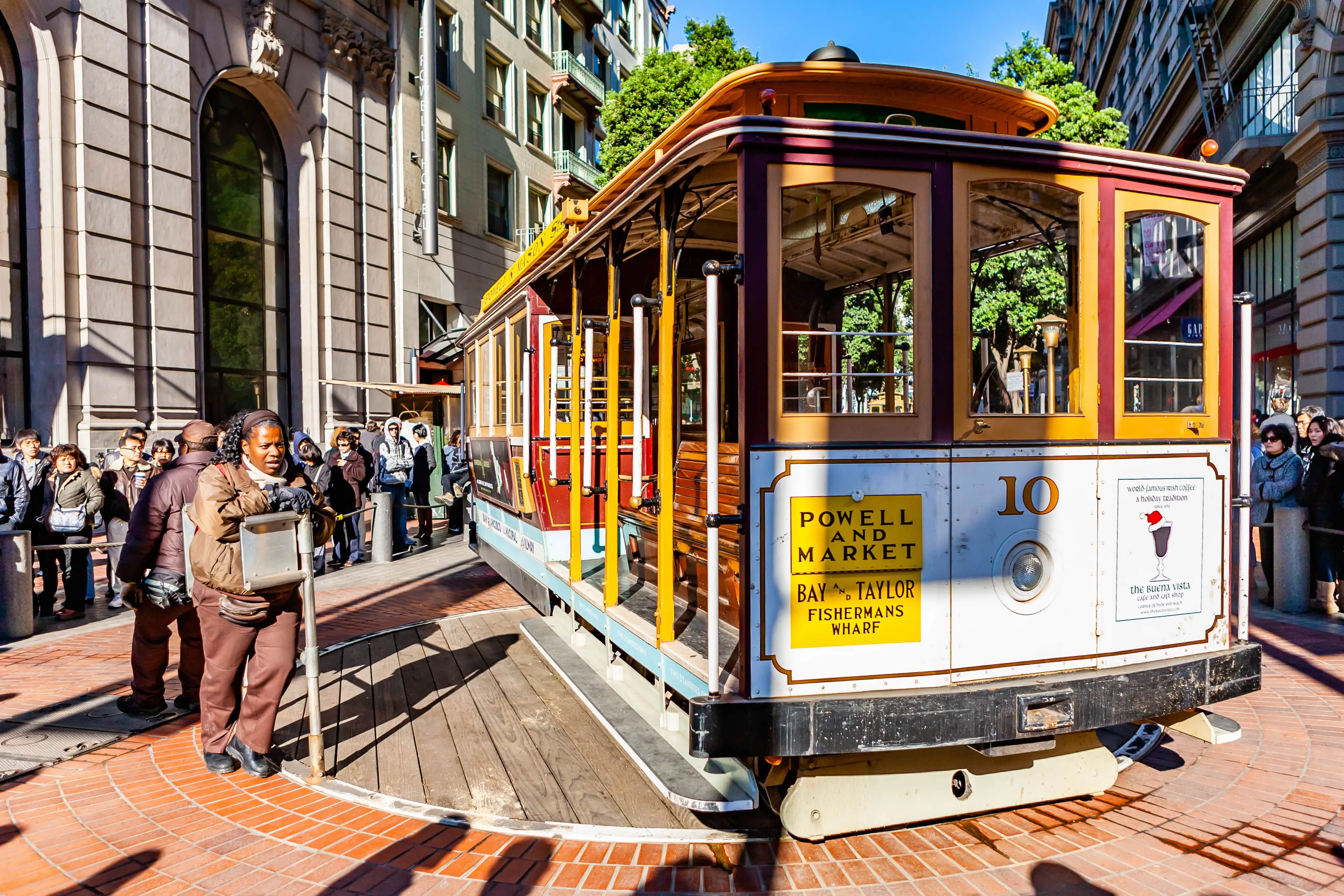Guide to Exploring San Francisco by Cable Car
How to ride the cable car in San Francisco
San Francisco is a city of iconic landmarks, diverse neighborhoods, and unique attractions. And there's one experience that every visitor to the city should have: riding the cable cars. San Francisco's cable cars have been in operation since the late 19th century, and they are one of the few remaining systems of their kind in the world. They are not just a tourist attraction or a mode of transportation, but also a symbol of the city's history, ingenuity, and spirit.

Cable Car Lines
There are three cable car lines in San Francisco: the Powell-Hyde line, the Powell-Mason line, and the California Street line. Like any other transportation system, each line has different stops and destinations, so the line that you will take ultimately depends on what you want to see or where you are headed.
Powell-Hyde Line (Blue line)

The Powell-Hyde line leaves from Powell Station at the intersection between Powell and Market Streets, near Union Square, and ends at Hyde and Beach Streets in Fisherman's Wharf. This is the most popular and exciting line to take since it takes you directly to Fisherman’s Wharf, while feeding you with amazing views along the way. Along this line, you will get to see the Coit Tower, Alcatraz Island, San Francisco Bay, and Lombard Street.
💡 Tips: For the best views on this line, sit on the right side of the car if you're heading towards Fisherman Wharf, and on the left side if you're in the opposite direction.
Powell-Mason Line (Green line)

The Powell-Mason line also leaves from Powell Station, and it ends at Taylor and Bay Street at Fisherman’s Wharf. The line passes through the charming neighborhoods of Nob Hill, Russian Hill, and North Beach. The views on Powell-Mason line isn’t as great as those on the Powell-Hyde line, but if you are just taking the cable car as a way to get to Fisherman’s Wharf (or back to Union Square), this line is usually less crowded and the ride is shorter.
California Street Line (Red line)

The California Street Line runs from California and Market and continues to Van Ness Avenue. Unlike the other two lines, this line doesn’t bring you directly to Fisherman’s Wharf and a majority of riders on this line are locals who are using the cable car as a means of daily commute. It runs through the Financial District, Chinatown, and the Nob Hill neighbourhood.
Buy Your Tickets
To avoid long lines, it is highly recommended to purchase your tickets in advance from the MuniMobile app or to get a Clipper Card, a reloadable transit card that can be used on all major transit systems in the Bay Area.

If you prefer to pay in cash, you can also purchase the tickets from the ticketing booths at the stations. Alternatively, you can also pay your fare directly to the cable car operator. A one-way ticket cost $8, and exact change is required. However, take note that if you are boarding the cable car at Powell & Market, Bay & Taylor, and Hyde & Beach Street, cash payment is not accepted.
💡 Tip: If you plan to take multiple trips on the cable cars or other forms of public transportation in San Francisco, it could be more cost-effective to buy a visitor passport for unlimited Muni rides. Visitor Passports can be purchased on the MuniMobile app at a cheaper rate. Note that the Muni visitor passports only includes Muni transportation and are not valid on BART or other transit systems.
Riding the Cable Car
Boarding the car
The boarding experience is rather similar to how you would board a bus.
Most people will board the cable cars at the terminal station. If you are getting on board at the terminal station, just join the lines that are waiting to get on. Long queues tend to form at the Powell lines, so you definitely wouldn’t miss those.

If you are boarding at non-terminal stops, simply wait at the curb at the cable car stops. When you see the cable car approaching, wave at it and flag it down — if there are seats available on the car, the car will stop for you to board.
Alighting
The cable cars do not stop at every stop, and will only stop when there is someone who is alighting. Unlike buses, ringing the bell does not indicate a request to stop, and you will need to explicitly inform the grip man that you would like to alight at the next stop. Do inform the grip man in advance.
When exiting, wait until the vehicle comes to a complete stop. As you will be alighting in the middle of the streets, be sure to watch out for traffic as you step out. Stop, look, and listen carefully before crossing cable car intersections. The green "X" traffic signal is the “go ahead” signal for cable cars, not pedestrians.
Skipping the Lines
The lines for the cable cars could get really long, and there are a few ways you could try to skip the lines:
- Board from a non-terminal station: The non-terminal stations are often less crowded and you will be able to skip the lines if you boarded from these stops. However, the best seats on the cable car would likely not be available, but you’ll still be able to experience riding the cable car.
- **Skip the Powell-Hyde line: **The Powell-Hyde line is the most popular line with the longest queues. If you are simply looking to experience the cable car, you can consider taking the Powell-Mason line or the California Street Line instead. Note that the Powell-Mason line could get rather long too since it brings you to Fisherman’s Wharf, but the queues are often shorter than the Powell-Hyde line.
Key Information
🕤 Operating Hours:
- Powell-Hyde Cable Line: 7am - 11pm
- Powell-Mason Line: 7am - 11pm
- California Street Line: 7am - 9pm